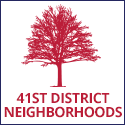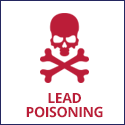Saturday morning, I heard about the torch carrying white supremacists and neo-Nazis who marched around a church, shouting a Nazi slogan.
I thought of Nazi Germany and the American South during the civil rights protests.
That afternoon, not yet aware of the loss of life in Charlottesville, I was campaigning and knocked on the door of an acquaintance in Mt. Washington.
I knew that he was one of the students who sued in 1952 to integrate Poly. I knew one of his local attorneys, Marshall Levin. I also knew that Thurgood Marshall had argued the case before the Baltimore City School Board.
As a loyal City alumnus, I had to ask why Poly, instead of City.
“The engineering program there was unique,” he replied.
“Did you meet with Marshall beforehand?” I asked.
“Yes, he met with the 14 plaintiffs one weekend.”
“What did he tell you?”
“Behave. Everyone is watching you.”
—
Last night, while watching MSNBC, I learned about legislation providing that “a person driving an automobile while exercising due care is immune for civil liability for any injury to another if the injured person was participating in a demonstration or protest and blocking traffic.”
By a vote of 67-48, it passed the House of the North Carolina legislature this past May. It awaits Senate action.
That such legislation would even be introduced is astounding.
I read Maryland’s hate crimes law. A death resulting from a criminal act, in this instance vehicular homicide, could be a hate crime.
I emailed committee counsel for the House Judiciary Committee in Annapolis: “If there had not been a death when a car was driven into the crowd in Charlottesville this weekend, would that have constituted a violation of Maryland’s hate crimes law?”
She responded this morning: “Driving a car into a crowd under these circumstances, not involving a death, would be a separate felony” and punishable as a hate crime.








